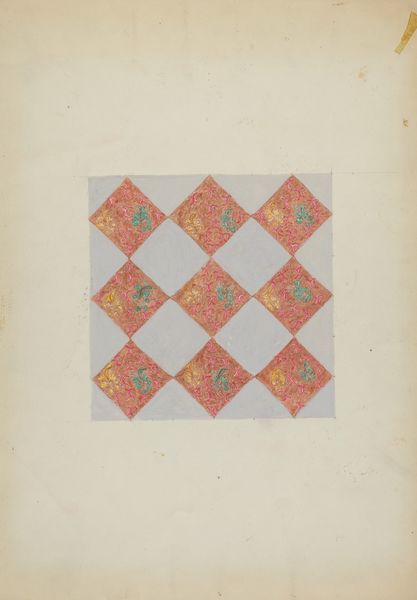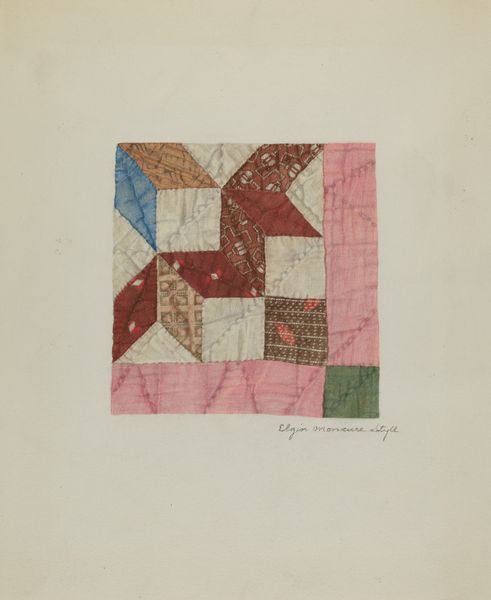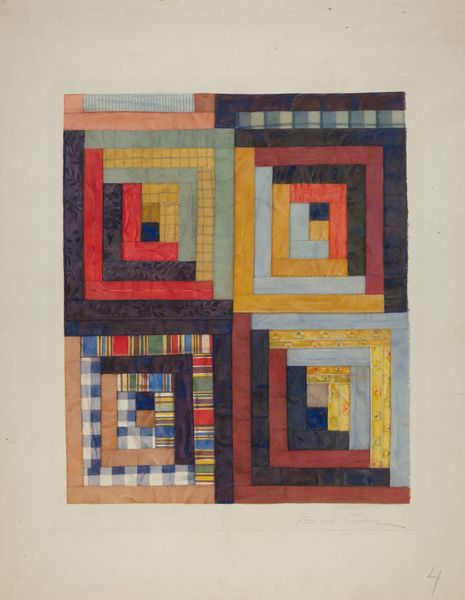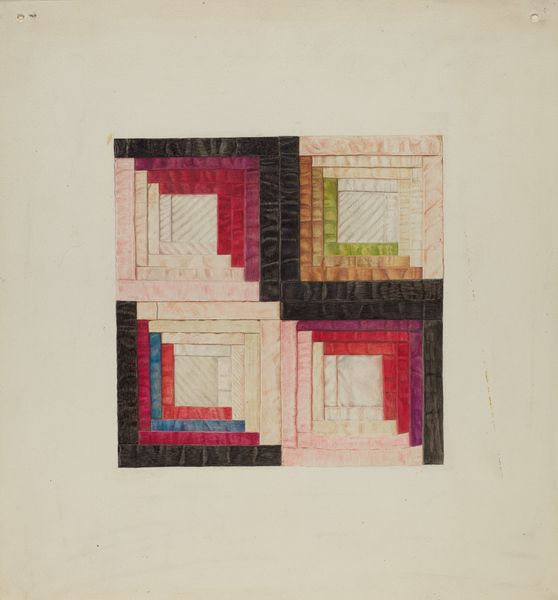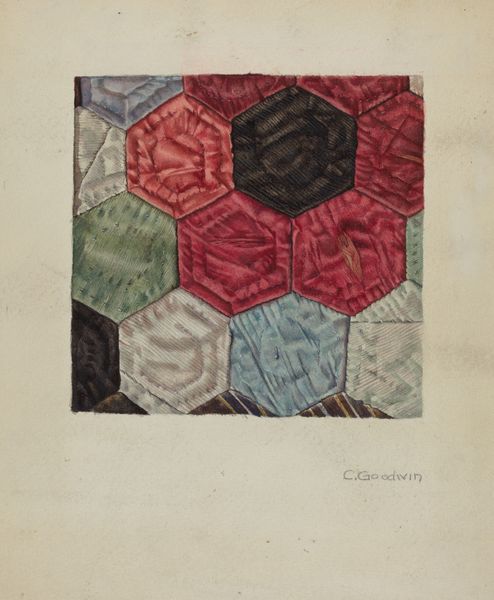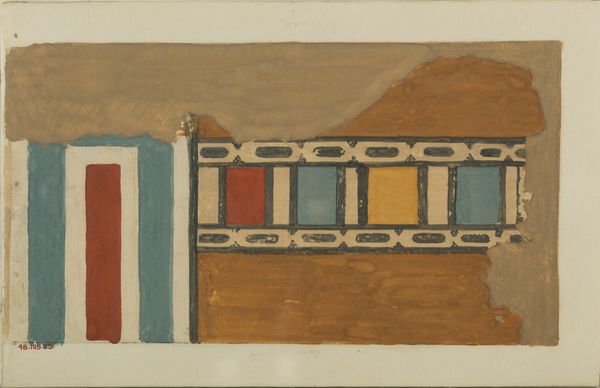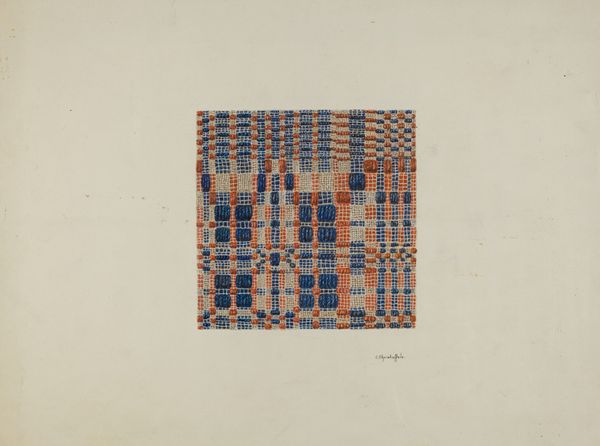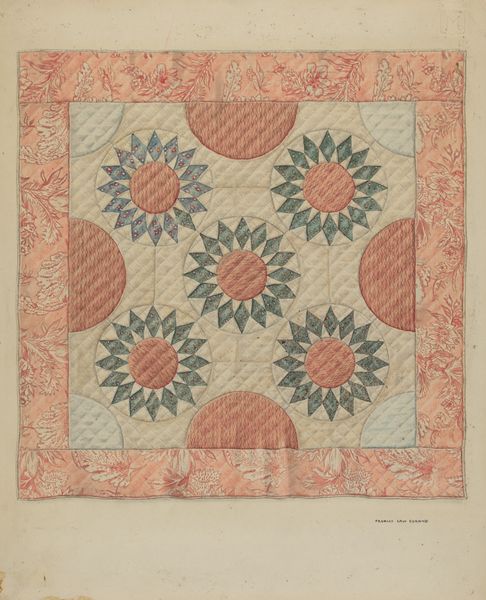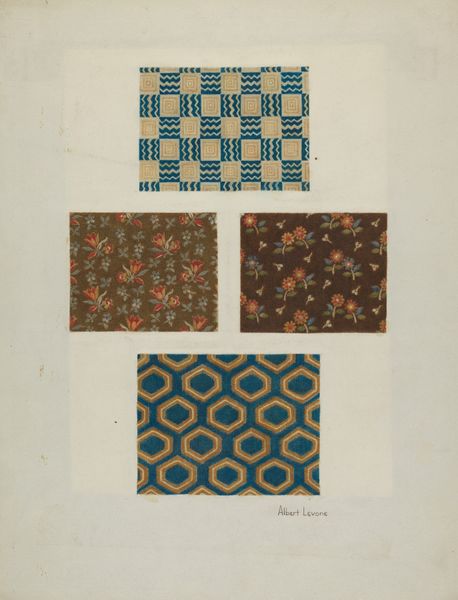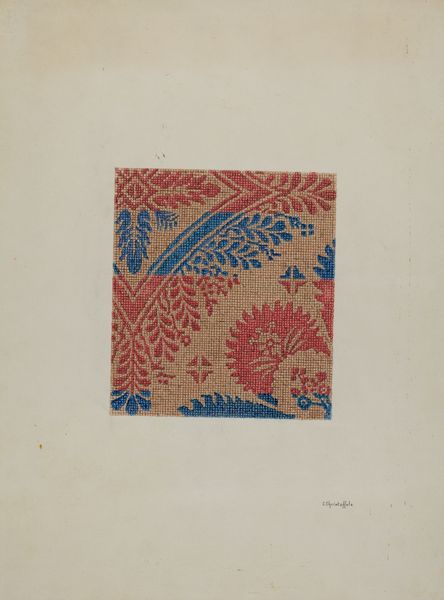
drawing, textile, watercolor
#
drawing
#
water colours
#
textile
#
watercolor
#
folk-art
#
watercolor
Dimensions: overall: 35.8 x 35 cm (14 1/8 x 13 3/4 in.)
Copyright: National Gallery of Art: CC0 1.0
Curator: At first glance, it's just so sweet. It feels quiet, intimate, and nostalgic somehow. There's something comforting about the patchwork effect, but with this restrained palette. Editor: Indeed, the piece, created around 1939, is titled "Silk Quilt - 'Honeycomb' Pattern," made by Elgin Moncure Styll. It's rendered primarily in watercolor and drawing on what appears to be paper. We can view this work within the context of folk art and consider the socio-political meaning and connotations of “quilt making”. Curator: Exactly. There's this underlying tension in representing a quilt using, for all intents and purposes, water colors. We cannot disassociate quilt making from communities and a certain type of communal labor. The piece really sits at the nexus of domesticity, labor, and visual representation. Do you think it makes a comment on gender expectations? Editor: Absolutely, I believe it implicitly raises questions about the division of labor, particularly through the lens of gender and the economic circumstances prevalent at the time it was produced. It offers insights into the changing roles of women and the increasing intersection between artistic practice and home craft. Curator: There's a softness too, though. The honeycomb form reminds one of communal construction and natural geometry, but its execution softens it somehow. Is it idealized, romanticized? What is it actually telling us about its social moment? I mean, why *isn’t* it an actual quilt? Editor: That absence is really telling. Is it an aspirational object? Or maybe a critique, a visual essay pondering labor’s relation to artistic practice? The fact that it mimics textile but it's a watercolour allows the artist to question the social function of "high" art versus utilitarian practices. Curator: Interesting. So, on one hand it appears warm and welcoming, yet undercuts it all. It's speaking to labor relations. Not just *is* this quaint, *should* it be quaint. Editor: Yes, it complicates these straightforward categories. Looking at the patterns more, the artist doesn't want to give us easy access, it feels both like comfort and a destabilization of those assumptions. Curator: It is a rich layering of intention and execution. I appreciate the dialogue between tradition and a forward thinking message! Editor: Me too, it demonstrates that everyday scenes can open our thinking.
Comments
No comments
Be the first to comment and join the conversation on the ultimate creative platform.
